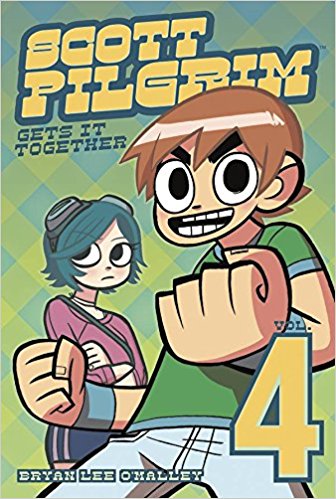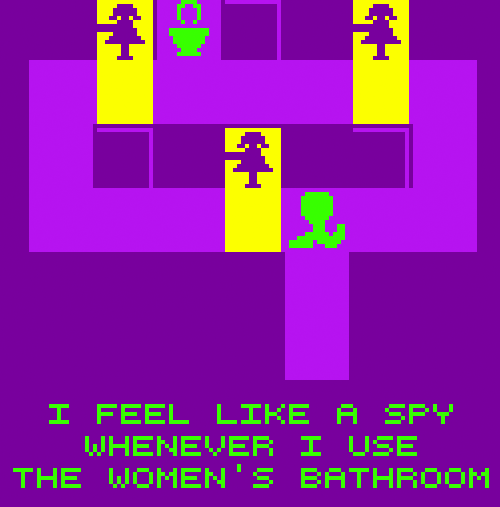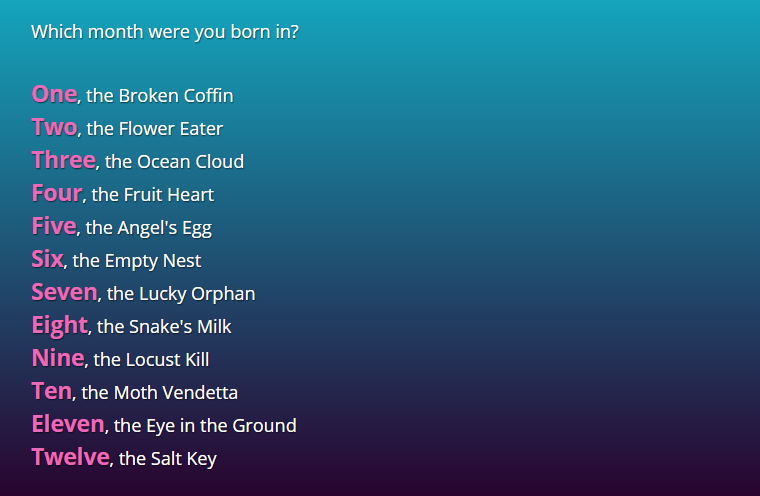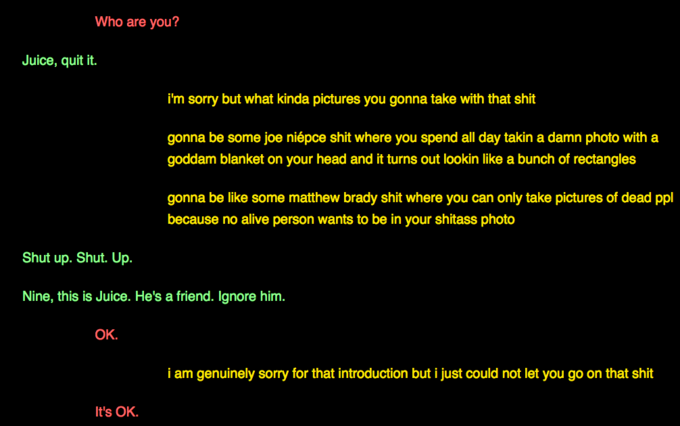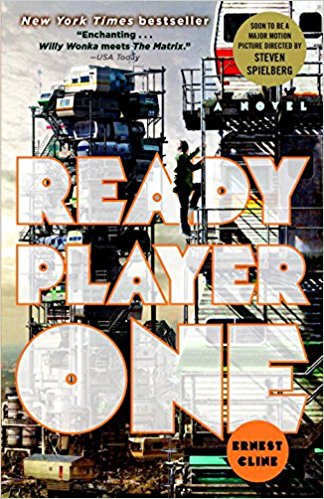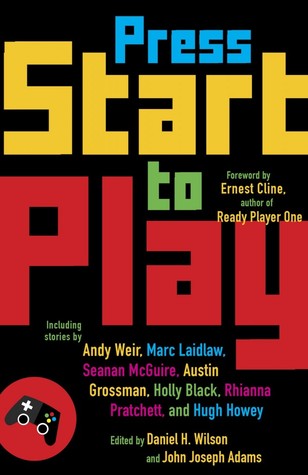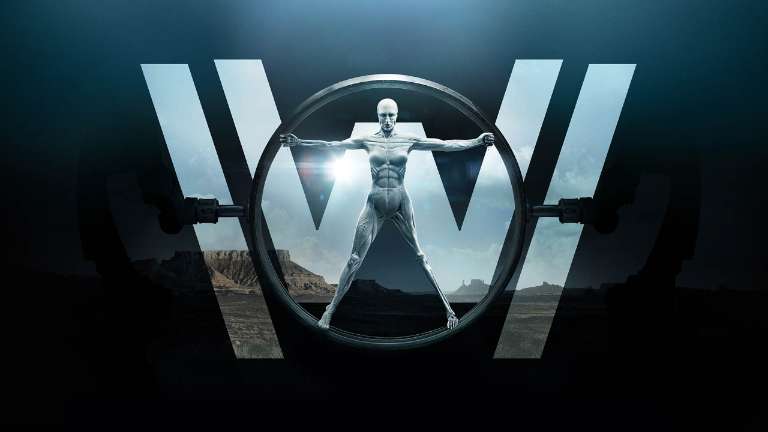This is the fourth in a series of posts dedicated to works of videogame literature and theater—not videogames that are literary or theatrical, but rather novels, plays, television series, graphic novels, museum installations, poems, immersive theater, and movies that represent in some fashion or another videogames, videogame players, and videogame culture. For a general description of my critical framework and purposes, see the first post in the series, “What is videogame literature?”
(Spoilers)
TEACHING AND LEARNING BETWEEN VIDEOGAMES AND LITERATURE
For the last several years, I’ve taught undergraduate and graduate courses that explore videogames as works of literature. In those courses, we explored all kinds of thing, including the often delicious tension between rules and fiction (thanks, Jesper Juul!); the ways videogame designers construct narratives, characters, and worlds; how videogame fictions change as they are told and retold in different media or by different players; how videogames represent race, gender, sexuality, and class; and so on.
In other words, when I’ve taught video games as literature, I’m applying to videogames the same kinds of critical tools that I would apply to novels, plays, poems, and movies.
No, I’m not imposing a literary model on videogames. (I saw a few of you starting to move towards the comments section . . .). Rather, I’m asking a question in full acknowledgment of the distinct nature of the videogame medium and the history of critics imposing a literary model on videogames: How can the tools of literary criticism help us better understand videogames?
And I’m asking what I think is an even more interesting question in response: How can videogames help us better understand literature? And part of that understanding is recognizing the limits of literary criticism and the literary model.
But as rewarding as that approach was, I was having trouble not being distracted by all the fun, interesting, occasionally mind-blowing literary stuff about videogames I was finding in, of all places, literature: in Bryan Lee O’Malley’s Scott Pilgrim series and Hazel Newlevant’s buh-rilliant collection of short graphic fiction by women gamers, Chainmail Bikini; in Neil Stephenson’s Reamde, Thomas Pynchon’s Bleeding Edge, and the stories collected by Daniel H. Wilson and John Joseph Adams in Press Start to Play; in television series like Halt and Catch Fire and Westworld; in movies like WarGames and Edge of Tomorrow (or whatever the spork that movie’s called).
It wasn’t just novels and movies that got me thinking along these lines. I was working with students who were creating their own videogame literature: fan fiction that shipped Overwatch characters; intense conspiratorial conversations about obscure points of Dragon Age lore; livestream performances on Twitch; poems about Pokémon and the art-deco tragedies of Rapture; cosplay that brought 16-bit heroes and villains into the halls of our Humanities and Social Sciences building. Why wouldn’t I incorporate those kinds of texts into my thinking about videogames?
So, last spring, I decided to take a different angle, to think about videogames not only as literature, but in literature.
By looking at books, movies, fan fiction, television, plays, and other kinds of aesthetic texts in conversation with videogames that are “literary,” I thought I might generate some useful insights into what videogames are, how they affect our day-to-day lives, our relationships with each other, the ways we see and hear the world, the way we imagine time, space, love, learning, and so on.
The results were exciting. The graduate courses I taught in the Summer and Fall of 2017—and the students who took them with me—proved inspirational. They’re the reason I started this blog.
Many of you have asked me to share my syllabi, so I thought it would be a good idea to post this, a version of the course I taught in Fall 2017. I’ve cut the boring stuff—attendance policies, grade scales, semester assignments—and annotated it to clarify my purposes, reflect on the choices I made, and give at least a taste of what my students and I explored and discovered together.
In this post, I describe the big picture: the framework, objectives, texts, and rationales that drove my decisions. In the other posts, I’ll delve into the week-to-week schedule.
COURSE OVERVIEW
The premise of the course is that videogames are an ascendant, if not hegemonic medium. They’re a multi-billion dollar entertainment industry, a hobby, a part of our everyday lives (How many steps did I take today? How many likes did I get?), a tool for learning and teaching, a body of tropes and stereotypes (Looking at you, misogynist nacho-addicted guy in mom’s basement), a tool for the expression and negotiation of social and political power, and, last but not least, a medium that represents ideas and emotions, comments critically on who we are, and tells powerful, memorable stories. So, I think we need to pay smart attention to what videogames are and how they are shaping who we are. And that attention needs to be focused on the games themselves and the representation of games, players, and player culture in other kinds of texts.
I organized the course around two questions.
First, “How do videogames tell stories?” Narrative is a powerful cultural and ideological force, so understanding the particular ways that video games—in all their diversity—construct imaginative fictions is a vital and fun thing to do. Do all videogames tell stories? Of course not. But, apologies to Ian Bogost, when videogames tell stories, they do so in fascinating, beautiful, significant ways.
Second, “What are the stories we tell about video games?” Video games, gaming, and video game players are a common subject of novels, short stories, movies, fan fiction, comics, blogs, and television series. A critical examination of these can help us gain a better understanding of the significance of video games to our selves and our communities. And it can help us gain some intellectual and pedagogical traction on how video games are changing the way we tell stories, how we think about subjectivity, how we imagine time and space, and how we negotiate the media ecology of our moment.
Ultimately, I wanted to learn more about what video games mean to our culture right now, to get some kind of a grip on a medium and a culture that is changing as quickly as the technologies on which we play games and the people who make and play them.
COURSE GOALS
- To identify, explore, and critique the genres, procedures, and tropes used by video games to construct fictions—characters, worlds, narratives, themes, and so on. In particular, we will explore how video games construct character and shape the ways players identify with those characters, especially as that concerns race, class, gender, and sexuality.
- To identify, explore, and critique the representation of video games, gaming, and players in novels, short fiction, comics, movies, and television series. What kinds of stereotypes do we find in these texts? Where do we see representations of games and gaming being pressured or constrained by the storytelling conventions of older media?
- To identify and explore the ways that video games and literature are part of a shared media ecology. When we play video games, we don’t just play the game itself. We participate in a “convergence culture,” to recall Henry Jenkins’s term. “Playing a game” can also include visiting websites, dressing up as our favorite character, watching live streams, writing comments in response to blogs and videos, reading fan fiction.
- To develop expertise in and understanding of the discourse of video game criticism, particularly the kinds of criticism being promoted by “middle state” publications. One of the best things about contemporary video game culture is the opportunities available to anyone who has an opinion. That’s also one of the worst things about contemporary video game culture. Together, we’ll learn how to express our ideas thoughtfully and in conversation with others who do so, too.
WHAT DID WE PLAY?
Unlike previous courses I’ve taught on videogames, I didn’t include a single AAA title (though some might consider Portal AAA). When I play videogames wearing my velvet, tasseled English Professor hat, I’m attracted to games produced by individuals and small companies, games that are both fun to play and fun to think about. As a rule, I favor games that push me to think about what I’m doing and how I’m doing it, that “queer” game play in some fashion or that include characters who challenge conventional understandings of race, gender, sexuality, and class. I tend to emphasize ethics in my courses, too, so the games I prefer as a literary scholar and critical theorist typically have an ethical dimension to them, either in terms of the decisions that have to be made in game or the issues they raise for those who play them.
But there are pragmatic reasons for my choices, too.
First, the games I choose are relatively short and require relatively little skill to play. Not all my students play videogames. So, in the same way that I need to consider the challenge (and time) it will take a novice to read a dense, difficult text by Jacques Lacan, Gertrude Stein, or Suzan-Lori Parks, I need to think about the challenge posed by a first-person shooter like Bioshock or the time it takes to get to the narrative good stuff in Skyrim.
Second, anyone teaching videogames needs to think a lot about access. Few students own game consoles. And while I can presume that students have personal computers and phones, I can’t presume they are all have the same kinds of computers and phones. So, as much as I love Dear Esther, I would have rather included What Remains of Edith Finch (Steam). Alas, the latter is not available for those who play their games on Macs. What it came down to was this: Every game had to be purchasable via Steam and had to be playable on both PC and Mac.
Third there is the question of cost. While there are educational benefits to exploring widely, the expense of such exploration can severely strain the checking accounts and financial aid of students. The students I teach, both graduate and undergraduate, aren’t rich.
So, in light of my educational objectives and the material constraints of my teaching situation, these are the games we played:
The Beginner’s Guide (Davey Wreden, 2015)
A great example of what is sometimes called a “walking simulator,” meaning you don’t do much as a player besides guide the camera through various environments. In this case, a narrator gives you a kind of guided tour of a series of brief games created by a designer he deeply admires, even obsesses over. Complexities emerge. (Steam)
A Dark Room (Michael Townsend, Amir Rajan, 2013)
I first played this on my phone while traveling from Portland to Pittsburgh on a very crowded plane. That trip ended up passing quickly. A Dark Room is basically a no-frills resource-management game with a simple, text-based interface. Build a fire, collect some wood, trap some animals, build a building, attract workers, collect more wood, build another building, and so on. But what develops from this is something genuinely surprising, the kind of twist ending that doesn’t feel at all forced, even though it casts everything we’ve done to that point into an entirely different light. (App store)
Dear Esther (The Chinese Room, 2012)
Another “walking simulator,” this one taking place on an isolated, windswept island somewhere in the Hebrides. As we explore the island’s nooks and crannies, a narrator reads letters to someone named Esther. What unfolds is a melancholy, strikingly beautiful tour of a landscape that is both in the world and of the mind. In tone and style, I’m reminded of Samuel Beckett’s lonely late plays: Eh, Joe and …but the clouds… (Steam)
Device 6 (Simon Flesser/Simogo, 2013)
A bit of deviously clever, highly polished puzzle-solving candy floss. This phone game nails the arch tone of classic paranoid 1960s movies and television like The Prisoner. I chose this game because I like the way it gets players to treat their phones like material objects (flipping them this way and that, swiping that way and this), its outstanding sound design, and the witty way it plays with text. One of my favorites is when we walk up a spiral staircase that is made out of the words we’re reading telling us we’re walking up a spiral staircase. (App store)
Dys4ia (Anna Anthropy, 2012)
How could someone interested in videogames, gender, and sexuality not include this classic queer game by one of the most outspoken and insightful queer game designers out there? Based on the rapid-fire, off-kilter play style of Warioware, it presents a series of simple games that give just a little bit of insight into the day-to-day life of a transgender woman in the midst of her transition. Canonical. (itch.io)
Gone Home (Steve Gaynor, 2013)
I taught this game the first time I taught a videogame course and I’ve taught it in every course since, including my sections of general education humanities literature. Another one of those “walking simulators,” we play as Katie Greenbriar, fresh back from a trip to Europe and presented with a simple question: Why aren’t our parents and sister home? As we explore the house, we gather clues, assemble the story, and experience one of the loveliest coming-of-age/coming-out-of-the-closet stories you could imagine. There’s a fairly massive body of criticism out there, too, so it’s a good game to teach if you want to introduce students to the field of games criticism. (Steam)
Horse Master: The Game of Horse Mastery (Tom McHenry, 2013)
I stumbled on this game as I was looking for a second interactive fiction game that would complement With Those We Love Alive. I think it’s brilliant. We play an ambitious horse master intent on creating a creature of magnificent, uncanny horror in order to launch ourselves into a life of unending fame and fortune. Imagine a pet simulator designed by William Burroughs. Pro tip: go with the Carolina Coffinbreath. (itch.io)
Kentucky Route Zero (Cardboard Computer, 2013)
Crack sauce for the English major videogamer, Kentucky Route Zero is a point-and-click adventure set in a contemporary, though magical-realist landscape around Lexington, Kentucky. It is densely intertextual, referencing the plays of Beckett and Ibsen, the novels of Steinbeck and Márquez, the photography of Russel Lee, the scenography of Beowulf Boritt, the installations of Nam June Paik, the fashion of Loretta Lynn (see above) . . . you get the idea (for a near-comprehensive list, see Magnus Hildebrandt’s meticulous three-part essay). But what really makes the game are the characters: an alcoholic trucker on his last delivery, a television-repair woman burdened with history, a brilliant architect forced to work as a thankless bureaucrat, a little boy and his giant-eagle brother. There is a moment in Act 3 that may be the single most beautiful thing I’ve experienced as a game player. Act 4 is a disappointment, so I don’t teach it. (Steam)
We explored three other digital fictions by the makers of Kentucky Route Zero, who have managed to put together a remarkable, consistently off-kilter transmedia fiction set in the magical millennial ruin of their fictional Kentucky. These include The Entertainment (2013), Limits and Demonstrations (2013), and Here and There Along the Echo (2014). The lattermost may be my favorite, in part due to the performances of Will Oldham and Poppy Garland. You can experience it simply by calling 270-301-5797. And Cardboard Computer keeps pumping out the good stuff. The fifth and final act of KR0 is forthcoming (I hope it’s better than Act 4, which I found laborious and overwritten), they’ve just put out a perfectly bizarre emulation of a 1980s all-access cable show, Un Pueblo de Nada (and rumor has it that the fifth act takes place in a haunted television station).
Portal (Valve, 2007)
We awake to find ourselves in the Aperture Science Enrichment Center, forced to solve a series of increasingly difficult and dangerous puzzles designed by a malicious artificial intelligence named GLaDOS. Armed with our handy “portal gun” and equipped with a pair of cybernet super-jump boots, we eventually discover the secret of this installation: The cake is a lie. All the elements converge: brilliant design by Kim Swift, crackling prose by Erik Wolpaw and Chet Faliszek, and an unforgettable performance by Ellen McLain as GLaDOS. But it also evinces some of the problems that face videogame storytellers. The articulation of game challenges and narration is pretty blocky (enter a room, listen to GLaDOS, solve the puzzle, listen to GLaDOS). (Steam)
With Those We Love Alive (Porpentine, 2014)
Alice O’Connor’s review nails it: With Those We Love Alive is “a game about how we create ourselves in the space we’re allowed by society, and how we respond to its demands and the many forms of violence that surround us. It’s about the roles we have to play, and the choices other people make for us. It’s about complicity and complacency. It’s about abandoning hope and finding it. It’s about the routines and demands of bodies. It’s about being so, so tired.” We play a gender-fluid artisan sold by our parents into the service of a monstrous Empress, biding our time before we escape with a long-lost lover. The game’s designer, Porpentine does so many clever things within the limits of the Twine software, including incorporating the player’s body into the action: From time to time, we’re asked to draw sigils on our bodies to represent specific moments and memories. (Free to play)
The B list
There is only so much time in a semester. And even though I’m the teacher, I want to learn about new games, too. So, that means there are many great games that are fun, interesting, and align with the course objectives, but there wasn’t time or I want to take a break from them.
Inkle’s 80 Days has been a regular on my game courses from the beginning (and was included in the summer version of the course). It does what it does so well, both in terms of the world it builds (a progressively minded steampunk reversioning of Jules Verne’s Around the World in Eighty Days) and the delicious prose of Meg Jayanth [LINK]. It’s got a great combination of play mechanics—part click-and-go interactive text, part resource management, part role-playing game, part emergent map construction—which make it a really useful text for the teacher who is looking for a “one stop pedagogical shop.” Just thinking about this game makes me want to play it again.
I want to play World of Warcraft with my students. So. Very. Badly. The particular way WoW connects (and fails to connect) story, character, and theme to gameplay, the rich storylines and mythos, the vibrant and problematic quality of player discourse, the opportunity for a group of students to develop their own lore—what’s not to love? Well, one thing: It takes time to experience Azeroth, to unpack its fictions, to learn the ins and outs of trade channel trash talk, to acquire the skills to delve into dungeons and raids. So, as much as I’d like to show off to students Daisypain, my oh-so-epic feral druid, she’ll have to wait a bit longer.
I also have a dream about a unit on Spec Ops: The Line, Francis Ford Coppola’s Apocalypse Now, and Joseph Conrad’s Heart of Darkness. Spec Ops is a shattering experience, and I’ve been trying for years to find a place for it on a syllabus. And to teach it as a text that signifies on and adapts Coppola’s movie, which signifies on and adapts Conrad’s book? Yes, please. But I worry that the punchline isn’t worth the joke, if you know what I mean.
WHAT DID WE READ AND WATCH?
This is the part of the course that I felt least confident about. Though I’ve been voraciously reading and watching every text I can get my hands on, I don’t yet have a good sense of the field as a whole. I struggled with my criteria. Should I teach only texts that are obviously and consistently about videogames? Should I include texts that make only passing reference but, if approached in the right way, might open up in interesting ways? For example, in James Cameron’s Aliens (1986), one of the characters (Bill Paxton’s scene-stealing Hudson), in a moment of desperation, cries, “Game over, man! Game over!” This seemingly incidental reference to games got me thinking about Hudson as a stereotypical white male videogame player and Aliens as a movie that thoroughly wrecks the heroic kill-em-all model of a certain kind of videogame.
But efficiency is a rule here, too. I needed a diverse body of texts, so it made sense to include two anthologies. I needed the texts we read to evidence the seven tropes of videogame literature. I needed texts that articulated the core critical concepts of the course. One of those was remediation, so the two Scott Pilgrim texts made sense, especially since I was relying on Drew Morton’s smart reading of the Scott Pilgrim metatext.
Here’s the final list:
Jon Bois, 17776 (SB Nation)
I’m assuming you haven’t read Jon Bois’s 17776. So, why don’t you go ahead and read it, then come back when you’re done. Here’s the link. I’ll wait.
You see what I mean? With the sardonic humor of someone who has spent a lot of time sitting around table with other inebriated sports wonks deep-diving into stats and bags of MSG-laden crisps, but with truly sympathetic insight into our simple desire to hang out with each other and ignore the fathoming terrors of being, Bois explores the existential significance of games. In addition, he does something I find especially intriguing, in light of my interest in how literature adapts the procedures of videogames and the cultures of videogame players. Bois builds his speculative fiction on the principles of glitch play. By breaking a few simple rules about human existence, football becomes something very different.
Check out Bois’s other experiments in what we might call “glitch-spec fiction.” He takes two popular sports videogames, sets a few parameters to fail mode, then writes about them in the terms and tropes of conventional long-form sports journalism.
All Is Lost (which explores the slow death of professional basketball via NBAY 2K)
Breaking Madden (the title is self-explanatory)
Ernest Cline, Ready Player One (Broadway Books, 2012)
As I’ve discussed elsewhere and elsewhere, I consider this is a deeply problematic text, which is one of the reasons I assign it. Plus, it’s a really fun book to read, it captures so much of the current zeitgeist around videogames, and Cline uses all seven videogame literature tropes.
Hazel Newlevant, ed, Chainmail Bikini: The Anthology of Women Gamers (Alternative Comics, 2016)
This has become a go-to text in my videogame courses. Newlevant assembled a kick-ass collection of short graphic stories that explore the gamut of female player experience and, just as important, the gamut of female player identities. The stories aren’t just about videogames—some of my favorites are about tabletop and live-action roleplaying games—but they’re always about the relationship between play and gender.
Bryan Lee O’Malley, Scott Pilgrim Gets It Together (Oni Press, 2004) and Scott Pilgrim vs. The World (2010, Dir. Edgar Wright)
I like both of these texts. They’re fun. They’re a perfect example of convergence culture and remediation. But, to be honest, I don’t find either of them all that substantial as explorations of videogames, players, or game culture. In the future, I’ll probably go with something else. Maybe this is where I do the Spec Ops/Apocalypse Now unit! On the other hand, a unit that pairs Edge of Tomorrow and its source text, Hiroshi Sakurazaka’s All You Need Is Kill could be a winner, too. And I’m tempted to go with Cline’s Ready Player One and Spielberg’s film adaptation.
Daniel H. Wilson and John Joseph Adams, ed. Press Start to Play (Vintage Books, 2015)
Another killer anthology, providing a lot of variety and a range of illustrations of those seven tropes of videogame literature. Though a few of the stories are a tad slight, most are wickedly wrought and emotionally compelling. A few (Jessica Barber’s “Coma Kings,” Austin Grossman’s “The Fresh Prince of Gamma World,” T.C. Boyle’s “The Relive Box,” Cory Doctorow’s “Anda’s Game”) are rib stickers—they’ll stay with you
Westworld (HBO, 2016)
But of course. One of the smartest explorations of videogames, players, and player culture around. Problematic in all the right ways. That said, I came this close to subbing this one out for the second season of Halt and Catch Fire (that’s the one where Cameron and Donna run their own game company). And then there are the several episodes of Black Mirror that explore the dystopian side of videogames.
And, of course, lots of theory
I’m a theorist at heart and our undergraduate and graduate curricula emphasize theory and theorizing, so every course I teach includes a lot of texts that explore the formal, social, historical, political, and ideological dimensions of literature and culture. The basic framework of the course was provided by Jesper Juul’s brilliant Half-Real: Video Games Between Real Rules and Fictional Worlds, a book that is rarely out of arm’s reach.
For details on what we did with Juul’s book and the many other shorter critical texts that I included in the syllabus, see part two.

